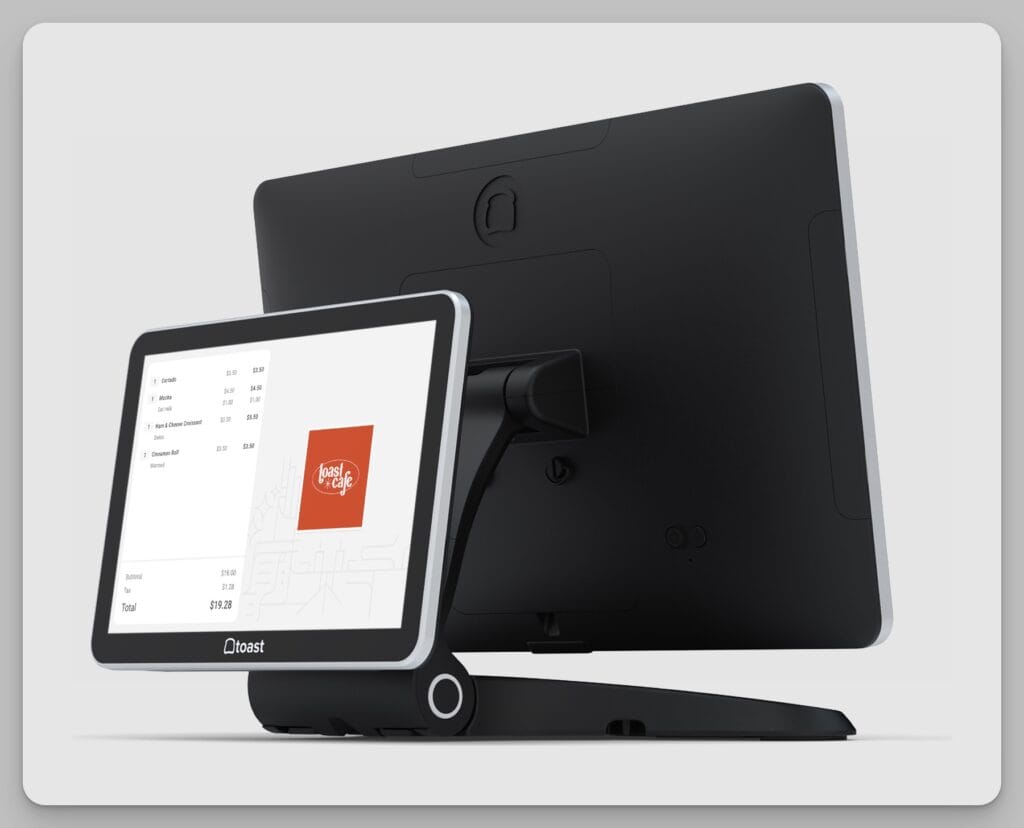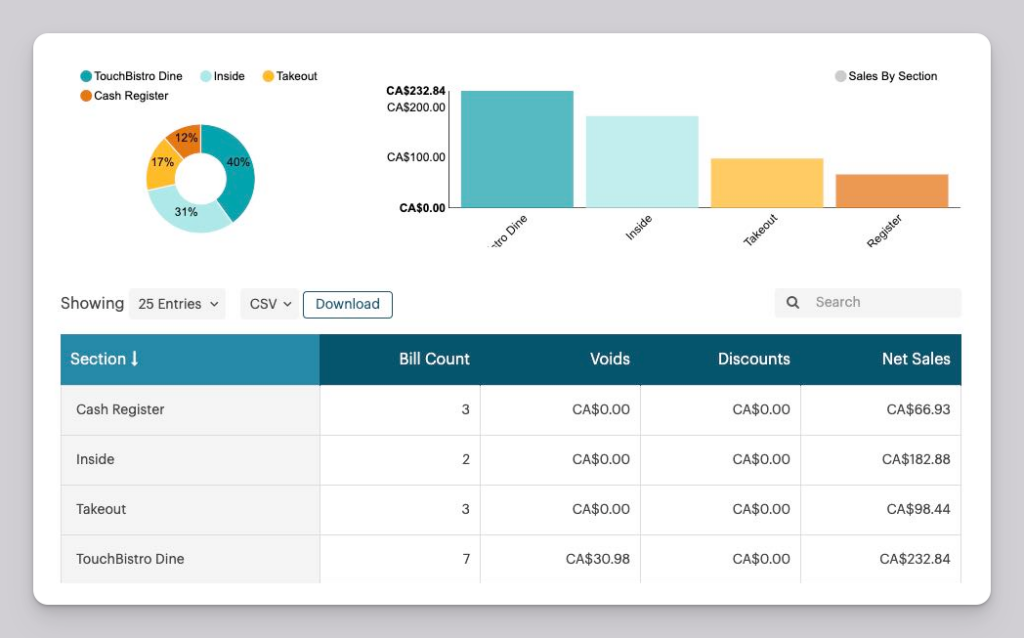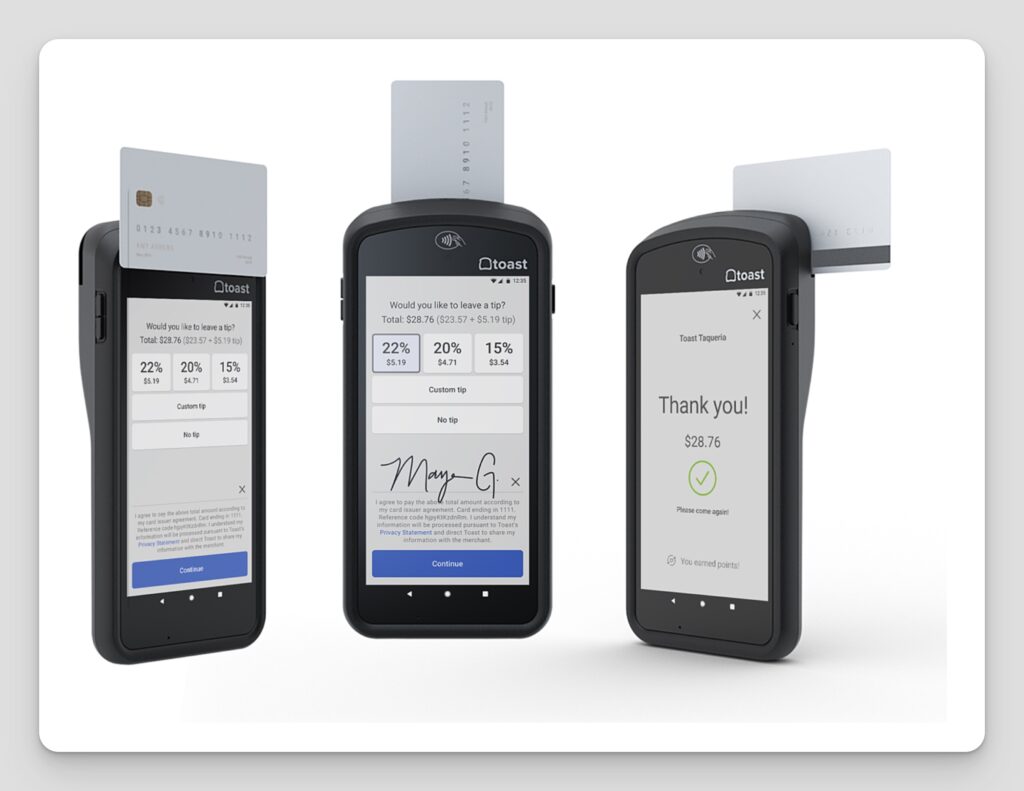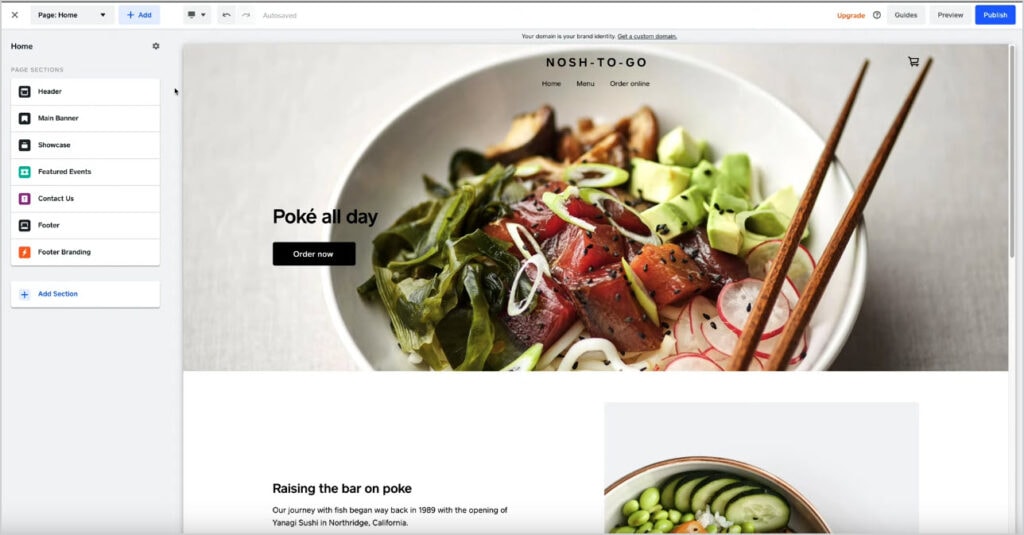Lightspeed POS is a major player in the restaurant tech industry, but it isn’t the only viable option. Interested in seeking alternatives that might better align with your specific requirements?
In this blog post, I’ll evaluate 5 top Lightspeed alternatives: Toast, TouchBistro, Square for Restaurants, SpotOn, and GoTab.
Each of these platforms will be thoroughly examined, including a discussion of their main features, pricing, and hardware, as well as assessing their pros and cons. All of this is aimed at providing a comprehensive comparison with Lightspeed.
With the help of this guide, you’ll be better equipped to choose the POS system that matches your restaurant’s goals and needs perfectly.
Note: Our reviews are reader-supported. We may earn affiliate commissions from links on this page. Learn more…

Reasons to Explore Competitors to Lightspeed
Though a leading POS system, Lightspeed has some limitations:
- Costly without Lightspeed Payments – Monthly fees rise significantly without using its processor.
- Expensive for small businesses – Pricing is on the higher side with monthly software and register fees.
- Annual contract required – Must commit to a year to get lower rates versus monthly terms.
- iOS only – Not compatible with Android or other devices.
For restaurants wanting more affordable rates, flexible contracts, seamless integrations, and cross-platform hardware support, Lightspeed may fall short. Competitors without these pricing, contract, integration, and device compatibility restrictions should be considered by restaurants needing a POS better tailored to their budget and needs.
My Top 5 Lightspeed Alternatives
The most innovative POS system on the market
Best for all types of restaurants that want a complete restaurant management system.
Best for small restaurants and coffee shops
A small business POS for establishments that need a subscription-free plan, smooth transactions and easy-to-operate retail features.
Designed by restaurant industry veterans
Best for independent full-service restaurants looking for a well designed, feature-rich and secure cloud/server-based POS system.
Excellent hardware options and no long term contracts
All-in-one POS solution with modern restaurant-specific features for fine-dining, QSRs, bars, and food trucks.
Easy-to-use mobile POS with a focus on eCommerce and contactless ordering and payment features. Card present processing fees: 2.40% + $0.15.
Now, I will review some of the top competitors of Lightspeed worth considering for your business. We’ll look at POS systems like Toast, TouchBistro, and Square, examining their pricing models, contract terms, integrations, and hardware compatibility compared to Lightspeed.
If you’re feeling limited by Lightspeed’s high costs without its processor, expensive rates for small businesses, required annual contracts, integration challenges, or iOS-only device support, one of these more affordable and flexible alternatives could be a better match for your restaurant’s needs.
Toast: Best for businesses that require a complete set of restaurant-focused features

The most innovative POS system on the market
Best for food service businesses that want advanced online ordering, take-out, and delivery features.
- Rapid development of new features
- Toast Takeout system
- Rugged mobile hardware devices
- Android only
- Locked into Toast payment processing
Toast has recently surfaced as a formidable competitor in the restaurant technology sector. With its swift expansion and a succession of high-profile acquisitions, Toast aims to become an all-encompassing restaurant operating system, positioning itself as a comprehensive solution for restaurants.
Fast Company recognized Toast as one of the most groundbreaking companies of 2023. The platform offers a rich suite of features, inclusive of payment processing, inventory and menu administration, marketing and consumer loyalty programs, staff management, control of labor and food costs, business reporting, and a plethora of other services.
Toast serves a broad spectrum of food service and hospitality businesses, including full-service restaurants, fast-food centers, cafes, bars, food trucks, and more.
Also, due to its high scalability, Toast matches well with businesses of all sizes – from small cafes to larger multi-venue establishments. As your business expands over time, the system is designed to scale up efficiently alongside your growth.
Why Toast is an Alternative to Lightspeed
Payment Processor: While Toast does use a proprietary processor (Toast Payments), the system’s integration allows for a seamless and efficient process that could potentially outweigh the cost factor. However, if using a non-proprietary processor is a priority for you, this may be an area of compromise.
Affordability: Toast falls mid-range in terms of overall software and hardware fees. It offers a choice of different pricing tiers based on the features and functionality required, making it an affordable option for small and medium-sized businesses that need flexibility.
Contract Terms: Toast does require a one-year contract, which might not be as flexible as some other POS systems that offer month-to-month or pay-as-you-go options.
Robust Integrations: Where Toast shines is in its API, which allows for custom integrations. It can seamlessly connect with a variety of third-party apps and technologies, enabling you to create a system that matches your restaurant’s unique needs.
Cross-Platform Hardware Compatibility: Toast’s hardware is Android-based, providing an alternative for businesses looking to diversify from iOS-exclusive systems. With its open-system nature, it can integrate with a wide range of Android devices and peripherals.

Innovative Features of Toast
More information on Toast:
My detailed Toast Review provides an even more in-depth look into this restaurant POS system.
And finally, to try Toast out, head over to pos.toasttab.com
Square for Restaurants: Perfect for user-friendly operations for new or smaller businesses

The fast and easy-to-use system
Best for new or smaller food service businesses that want to start on a free plan and want to sell products online.
- Subscription free plan
- No long term contracts
- Integrates with the Square ecosystem
- Lacks some advanced features
- No on-site support
Square began as a generic POS system, but it has impressively developed Square for Restaurants to suit the distinct demands of food service businesses.
With its modern, user-friendly interface, the POS is a fitting solution for many types of food service ventures. What makes it unique? Its user-friendly design, complimentary basic plan, and powerful marketing features.
Read more: Top Restaurant Challenges Square Aims to Resolve
Why Square is an Alternative to Lightspeed
Here’s how Square could be a better choice for restaurants:
Payment Processing: Square does rely on its proprietary payment processor; however, it excels in delivering smooth transactions which may outweigh the limitation of choice in this aspect.
Affordable for Small Businesses: Square offers a subscription-free plan, making it affordable, especially for small businesses. There are no long-term contracts – a beneficial point for startups or small establishments needing flexibility.
Flexible Contract Terms: Square’s no-contract policy offers the flexibility needed for changing business needs, making it more adaptable compared to services that require annual contracts.
Robust Integrations: Square integrates excellently with the broader Square ecosystem and supports various prominent third-party apps crucial to business operations.
Cross-platform Hardware: The Square Point of Sale app is available on compatible Apple iOS and Android devices. Square’s payment processing works with its POS and hardware, and you can accept payments anywhere customers are, including in-person, online, and mobile payments. Square’s hardware accessories, such as the Square Reader for contactless and chip, are compatible with both iOS and Android devices

Noteworthy Features of Square
More information on Square:
My detailed Square for Restaurants Review provides an even more in-depth look into this restaurant POS system.
And finally, to try Square out, head over to squareup.com
TouchBistro: Best for small to medium-sized full-service restaurants preferring iOS platforms

Designed by restaurant industry veterans
Best for independent full-service restaurants looking for a well designed, feature-rich and secure cloud/server-based POS system.
- Speedy & easy to use
- Commission-free reservations
- Excellent offline functionality
- Fewer integrations than competition
- Somewhat limited reporting features
TouchBistro stands out as an excellent pick for independent full-service restaurants but is equally effective for other types of eateries needing an easy-to-use and fast system.
This system offers an intuitive design and many restaurant-specific features. Its hybrid cloud/server system provides constant access to your data while ensuring its security.
TouchBistro is a versatile solution for small to medium-sized full-service restaurants, quick-serve locations, bars, and cafes.
However, larger chains, hotel restaurants, or other businesses with complex multi-location needs may find it less suitable.
Why TouchBistro is an Alternative to Lightspeed
Payment Processing: Payment processing fees depend on whether you use TouchBistro Payments (US only) or one of the available payment processing partners like Square. You’ll be able to use different payment processors depending on which one offers the lowest rate.
Affordable for Small Businesses: TouchBistro is notably effective for independent full-service restaurants and small to medium-sized businesses, given its attractive pricing starting at $69 per month.
Contract Terms: TouchBistro requires a contract commitment, and the contract term is provided in the quote you get directly from TouchBistro.
Robust Integrations: While TouchBistro has fewer integrations than the competition, it still provides crucial features like kitchen display systems, reservations, online ordering, menu management, tableside ordering, and profit management. These features integrate well with each other, providing a comprehensive ecosystem for restaurant management.
Cross-Platform Hardware: TouchBistro is designed for use on Apple devices, offering a quick-to-master solution.

Innovative Features of TouchBistro
More information on TouchBistro:
My detailed TouchBistro Review provides an even more in-depth look into this restaurant POS system.
And finally, to try TouchBistro out, head over to touchbistro.com
SpotOn: Best for competitive processing fees and flexibility in contract terms

Excellent hardware options and no long-term contracts
All-in-one POS solution with modern restaurant-specific features for both full-service and counter-service restaurants.
- Very feature rich
- Robust hardware devices
- Low credit-card processing fees*
- No long-term contracts
- Excellent local customer support
- Requires SpotOn devices
- *Requires SpotOn Payment for low fees
- Expensive add-ons
SpotOn is one of the leading cloud-based restaurant POS systems. Other similar systems include Toast, TouchBistro, Lightspeed, and Square. These newer systems are taking the place of older legacy systems like NCR and Oracle.
SpotOn is a good fit for a variety of restaurants, especially fine-dining and casual restaurants, as well as quick-service restaurants, bars, and food trucks.
All the core restaurant POS features and hardware devices that you would expect are included as well as many advanced features and add-ons.
In fact, I think it’s notable how many features and hardware choices SpotOn has considering it’s a relative newcomer in the restaurant POS scene.
The company was founded in 2017 and is headquartered in San Francisco. SpotOn serves the restaurant, sports, entertainment, and retail markets, with a primary focus on the restaurant and sports/entertainment sectors.
Why SpotOn is an Alternative to Lightspeed
Here’s how SpotOn might be a better choice for restaurants when considering the 5 factors mentioned:
Payment Processing: SpotOn offers competitive credit card processing fees when using their own payment processing with rates as low as 1.99% + $0.25 per transaction. However, if you choose not to use SpotOn’s payment processing services, your monthly cost increases from $25 to $195, making it less cost-effective for those who prefer an alternative payment processor.
Affordable for Small Businesses: SpotOn is suitable for a variety of businesses, including small restaurants and food trucks, with a starting monthly fee of $25 for those using SpotOn’s payment processing service. It has a relatively low cost of entry considering both the software and hardware fees.
Flexible Contract Terms: SpotOn offers a month-to-month payment model without requiring any long-term contracts. This gives restaurants the flexibility to try out the system without making a long-term commitment.
Robust Integrations: SpotOn is designed to integrate with other software and systems, making it easy for restaurants to work with the technology they already use. The POS system supports online ordering, labor management, reporting, and other modern restaurant-specific features.
Cross-platform Hardware: SpotOn is a Windows-based system, that provides its own excellent hardware devices as well as support for Android and iOS devices.

Noteworthy Features of SpotOn
The key advantages of SpotOn for restaurants include the integrated suite of features, user-friendly interface, robust hardware options, competitive payment processing rates, and advanced capabilities like online ordering and marketing tools. Its emphasis on customization also allows it to adapt to specific restaurant needs.
More information on SpotOn:
My detailed SpotOn Review provides an even more in-depth look into this restaurant POS system.
And finally, to try SpotOn out, head over to spoton.com
GoTab: Great for restaurants seeking transaction-based pricing without long-term commitments

Easy-to-use mobile POS with a focus on eCommerce and contactless ordering and payment features.
- Use your iPad or GoTab-branded hardware
- Free starting plan & no long-term contracts
- Customizable menus and zones
- Innovative features like shared tabs
- Responsive customer service
- Limited reporting capabilities
- Need for more integrations
- Only available in the US & Canada
GoTab is a versatile and innovative restaurant POS and commerce platform founded in 2016 with a mission to improve the operation and service of the hospitality industry through technology.
Offering a range of features GoTab focuses on contactless service, mobile ordering, payment, and efficient communication. Its user-friendly interface, integration with various systems, and real-time analytics provide restaurant owners the tools they need to modernize their operations, increase efficiency, and drive growth.
GoTab works on virtually any web-enabled mobile device, meaning you can use your existing hardware and save costs.
Why GoTab is an Alternative to Lightspeed
Payment Processing: GoTab operates on a proprietary payment processing system. They have a competitive, transaction-based pricing model which means there are no monthly costs unless transactions are being made.
Affordable for Small Businesses: As GoTab employs a transaction-based pricing structure, it does not burden small businesses with regular subscription fees. This makes it an attractive proposition for small businesses where transaction volumes may vary.
Flexible Contract Terms: GoTab does not require any contract. This means restaurants have the freedom and flexibility to adopt their POS system without commitments, providing flexibility, especially for businesses still exploring the best fit for their operations.
Cross-platform Hardware: GoTab offers a diverse range of hardware options and can run on any Internet-connected Android, iOS, or Windows tablet or phone.

Innovative Features of GoTab
GoTab enables a personalized ordering and payment process for every guest at your restaurant. With features like mobile ordering, diners can enjoy quick, secure service without the need for an app. This versatility allows customers to order and pay in the way that suits them best, either in-person, online, or via mobile.
More information on GoTab:
To learn more and to try GoTab out, head over to gotab.com
5 Things to Watch for in Lightspeed Competitors
- Pricing without proprietary processor – See if monthly costs stay low without being forced to use their payment processor.
- Affordable for small businesses – Find systems with lower overall software and hardware fees.
- Flexible contract terms – Look for month-to-month or pay-as-you-go options versus annual contracts.
- Robust integrations – Check that competitors seamlessly connect with all the apps and tech your restaurant uses.
- Cross-platform hardware – Ensure the POS works with Android and other devices in addition to iOS.
For restaurants wanting open payment processing, budget-friendly rates, short-term commitments, tight integrations, and multi-device support, Lightspeed competitors are worth evaluating.
Summary: What is The Best Lightspeed Competitor for You
Choosing the best alternative to Lightspeed largely depends on your business’s unique needs and preferences. Each of the discussed restaurant POS systems presents a variety of strengths that could make them a more fitting choice.
Toast: Designed for the restaurant industry, Toast offers a comprehensive set of features, including inventory management, online ordering, and customer loyalty programs. Their pricing is customizable and they provide a range of hardware options (including handheld devices) for tableside ordering. Toast, however, uses its proprietary payment processor, which could be a consideration for businesses that prefer using other payment services.
Square: Square is a user-friendly solution for mainly smaller food service businesses. It offers an affordable starting plan with added premium features available at additional costs. The system easily integrates with various third-party apps, and it works with iOS, Android, and Square hardware devices such as the Square Terminal. As with Toast, Square employs its proprietary payment processor, which might not be ideal if you prefer using an alternative provider.
TouchBistro: Best suited for independent full-service restaurants and small to medium-sized businesses. Its pricing is affordable, and it has strong offline functionality. However, it’s predominantly geared towards iOS users, so it may be less suitable if you prefer using Android or other platforms.
SpotOn: This system offers competitive credit card processing fees and provides the flexibility of a month-to-month payment model. It is integrated with modern, restaurant-specific features but shifts towards a higher cost if you don’t utilize their payment processing.
GoTab: GoTab operates without contracts, making it very flexible for businesses. It uses a proprietary payment processing system with a transaction-based pricing model, making it a cost-effective solution for businesses only wanting to pay per transaction.






















-p-1080.png)

